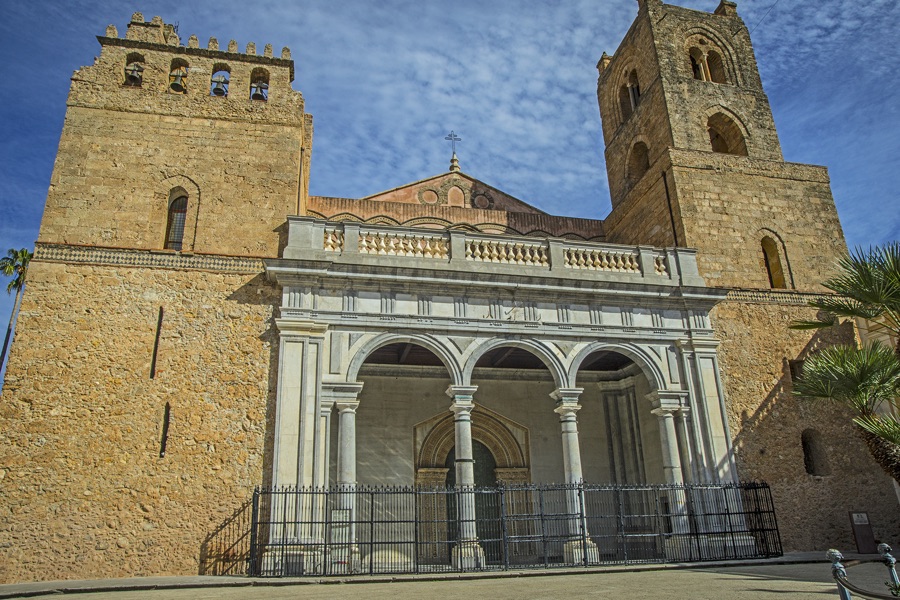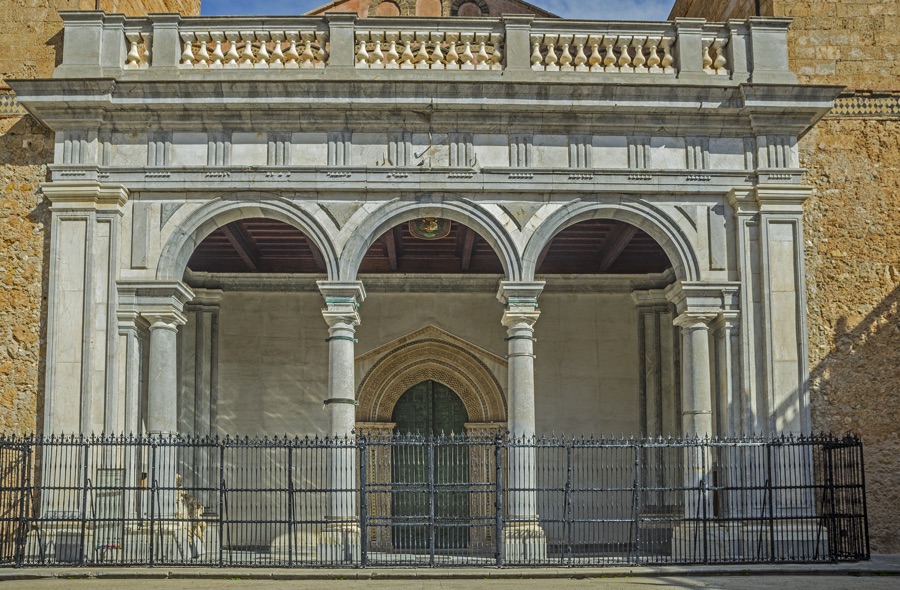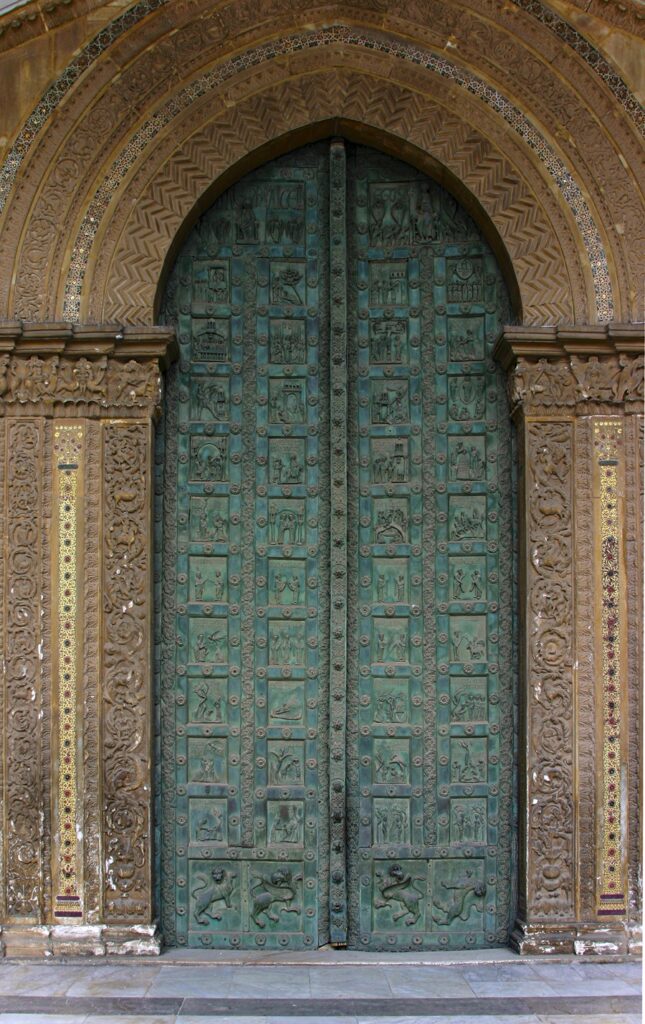 The front elevation of the Cathedral is distinguished by the sense of grandeur of its portico.
The front elevation of the Cathedral is distinguished by the sense of grandeur of its portico.
From its very foundation, it was intended to take the faithful on a journey, steeped in mysticism and wonder, into the imposing building of Monreale, dedicated to Santa Maria la Nuova. Nothing remains of the original structure, which was decorated on the inside with marble slabs in the lower area, embellished with mosaics that extended into the upper area. The original structure was altered following several collapses, starting in 1631. This was followed by an initial renovation that culminated in 1633 with
Pietro Novelli
Nothing remains of the original structure, which was decorated on the inside with marble slabs in the lower area, embellished with mosaics that extended into the upper area. The original structure was altered following several collapses, starting in 1631. This was followed by an initial renovation that culminated in 1633 with
Pietro Novelli
’s fresco decoration.
The year 1770 is remembered for another collapse and, again, the porticoed space was rebuilt by
Ignazio Marabitti
, based on a project by
Antonio Romano
.In the Baroque period, there was a sense of unity in terms of ornamental syntax that came with observing the western façade, almost as if we were being invited to immerse ourselves in the now non-existent
rich decoration
that enveloped the walls and the archivolts.
From references to subjects in the central apse, with the
mosaic
depicting a pair of archangels above the two central columns, to the images of saints that occupied the three
rounded arches
, elegantly placed on four cipollino marble Corinthian columns. Similarly, the interior of the portico also featured a
Mariological cycle
, linked to the dedication of the Cathedral to the Virgin Mary.
The intention to express grandeur was also evident in the colossal
pilasters
, which interacted with the vault, replaced in 1939 with a beamed ceiling. From 1964 onwards, two rectangular openings connected the portico with each tower. From these openings, it’s possible to reach
the baptistery
on one side and some service rooms on the other. As early as the external square, we are invited to enter the Temple through the
Gate of Paradise
, built by
Bonanno Pisano
, whose
ogival arch
stands at the centre of the façade between the two towers.

The monumental bronze door, commissioned by
William II of Hauteville
, consists of a wall of relief images, closed by architectural frames decorated with motifs that differ in form and materials used. The four pilasters that form the
jambs
have uniform bases and capitals, while their shafts provide continuity to the ornaments that make up the arch, on which
mosaic ornaments
of elaborate and delicate workmanship extend in an alternating rhythm.